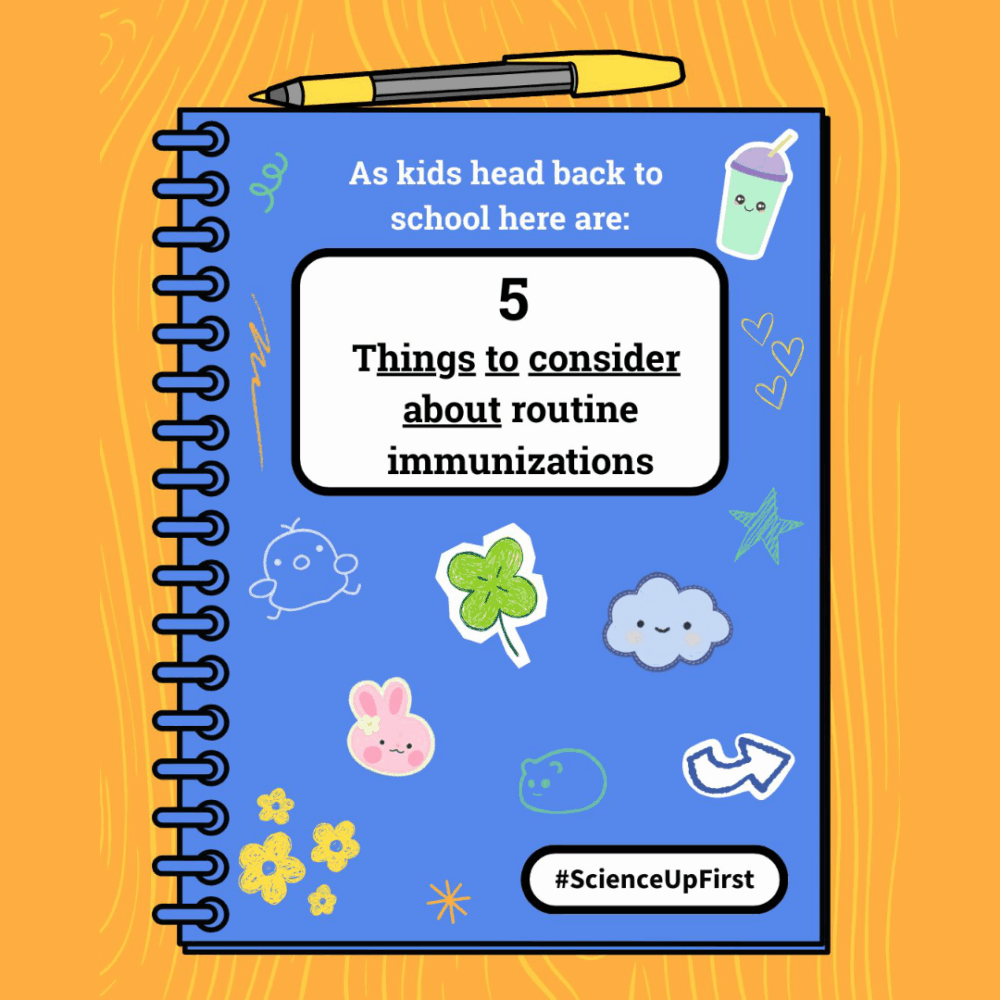
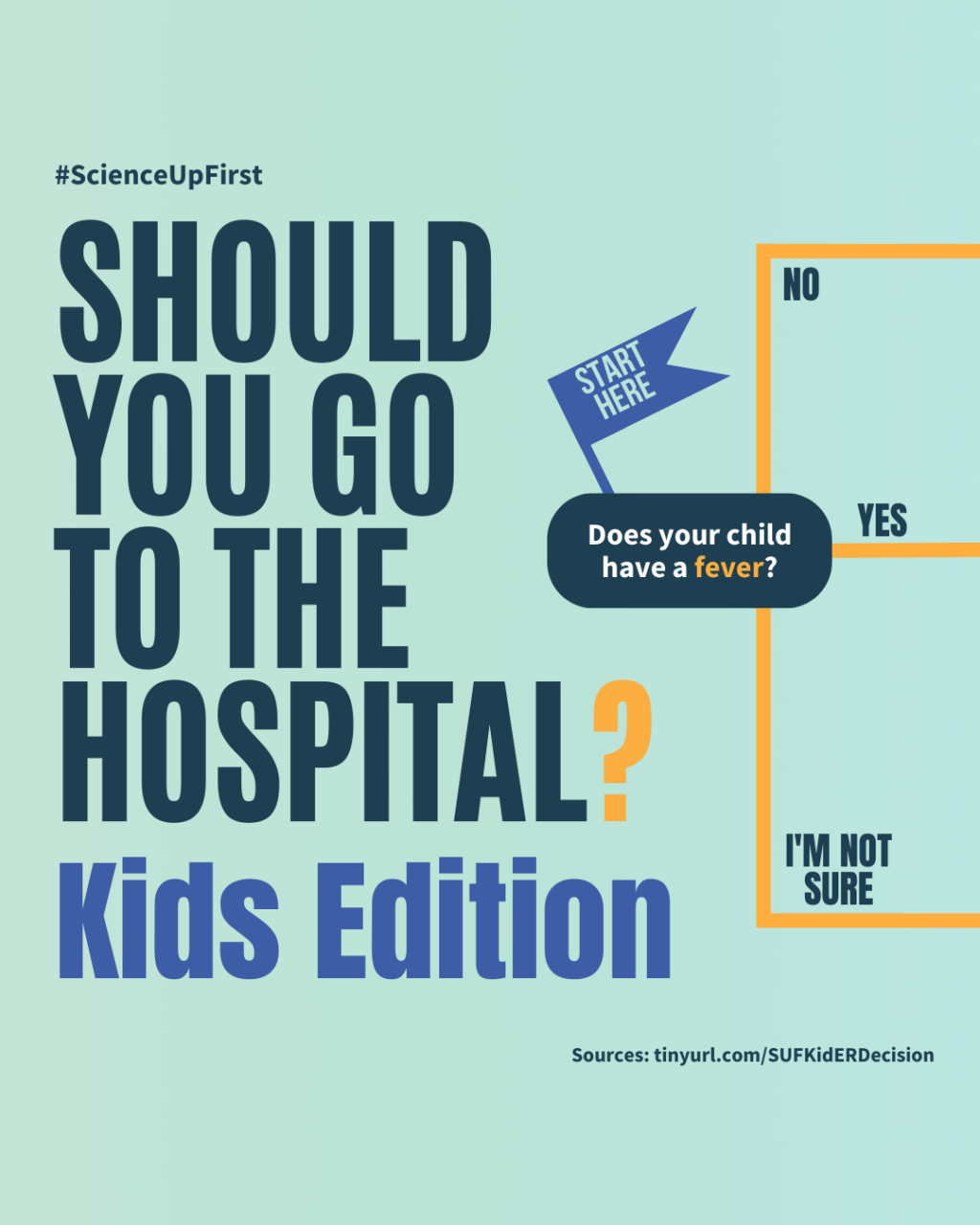
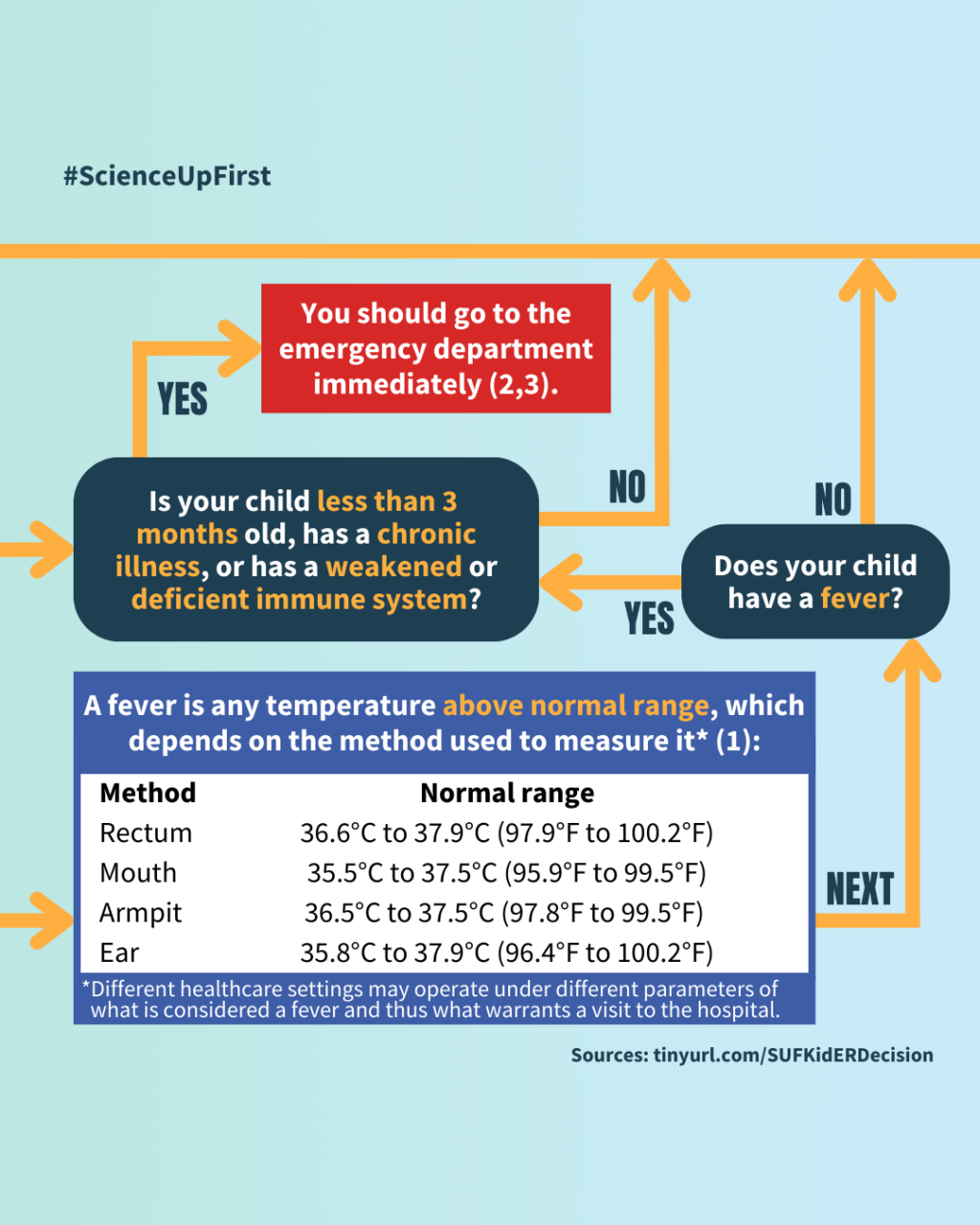
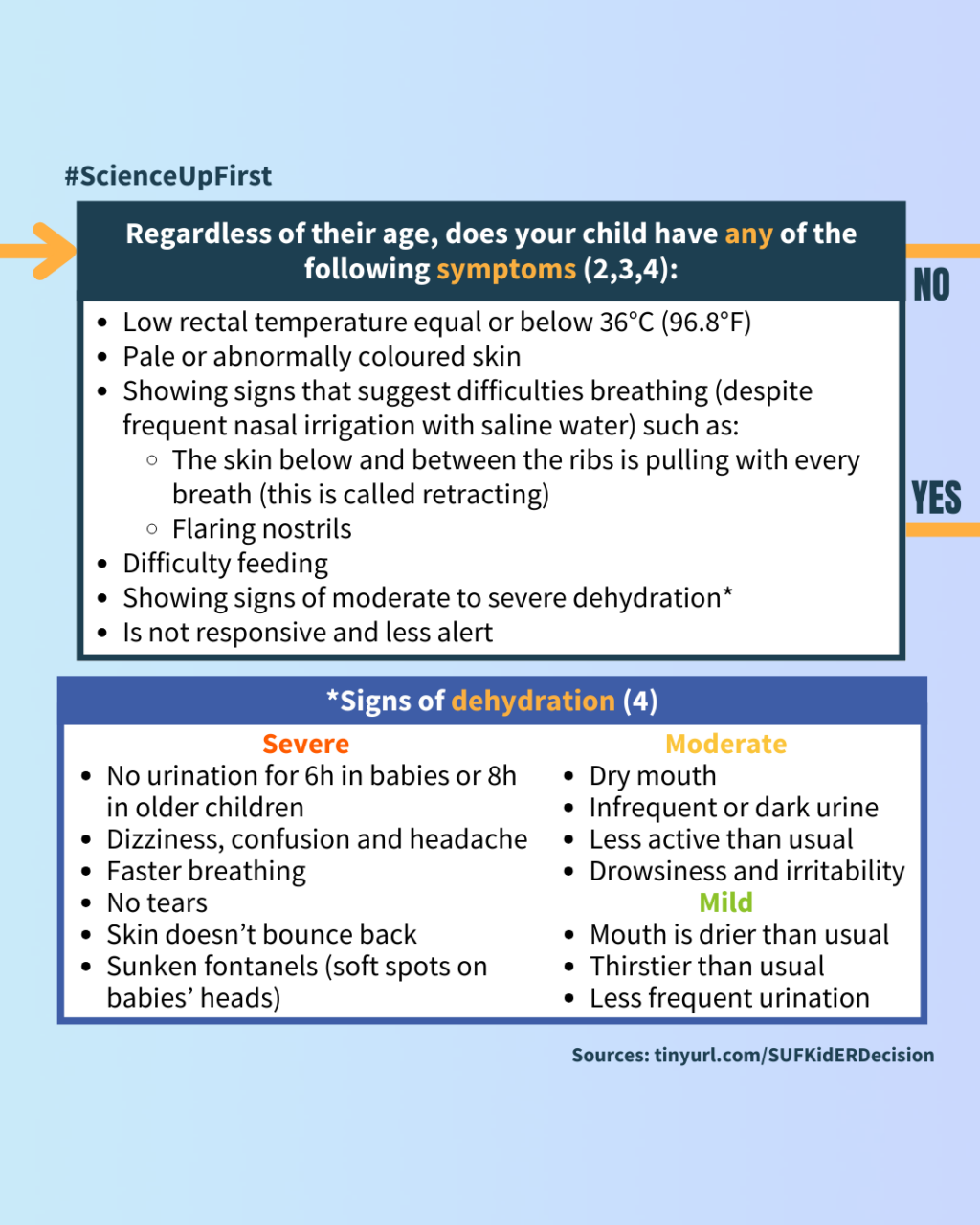
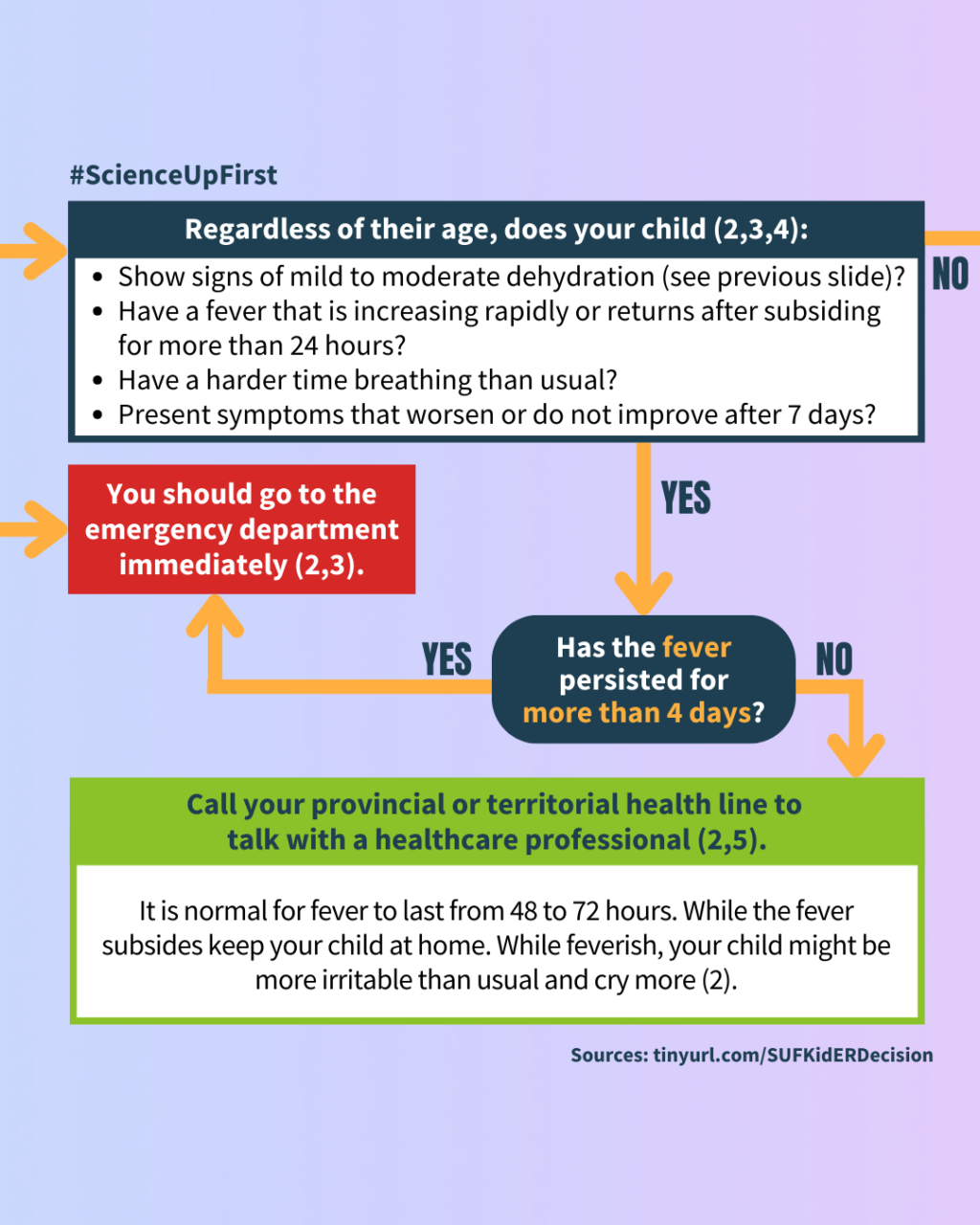
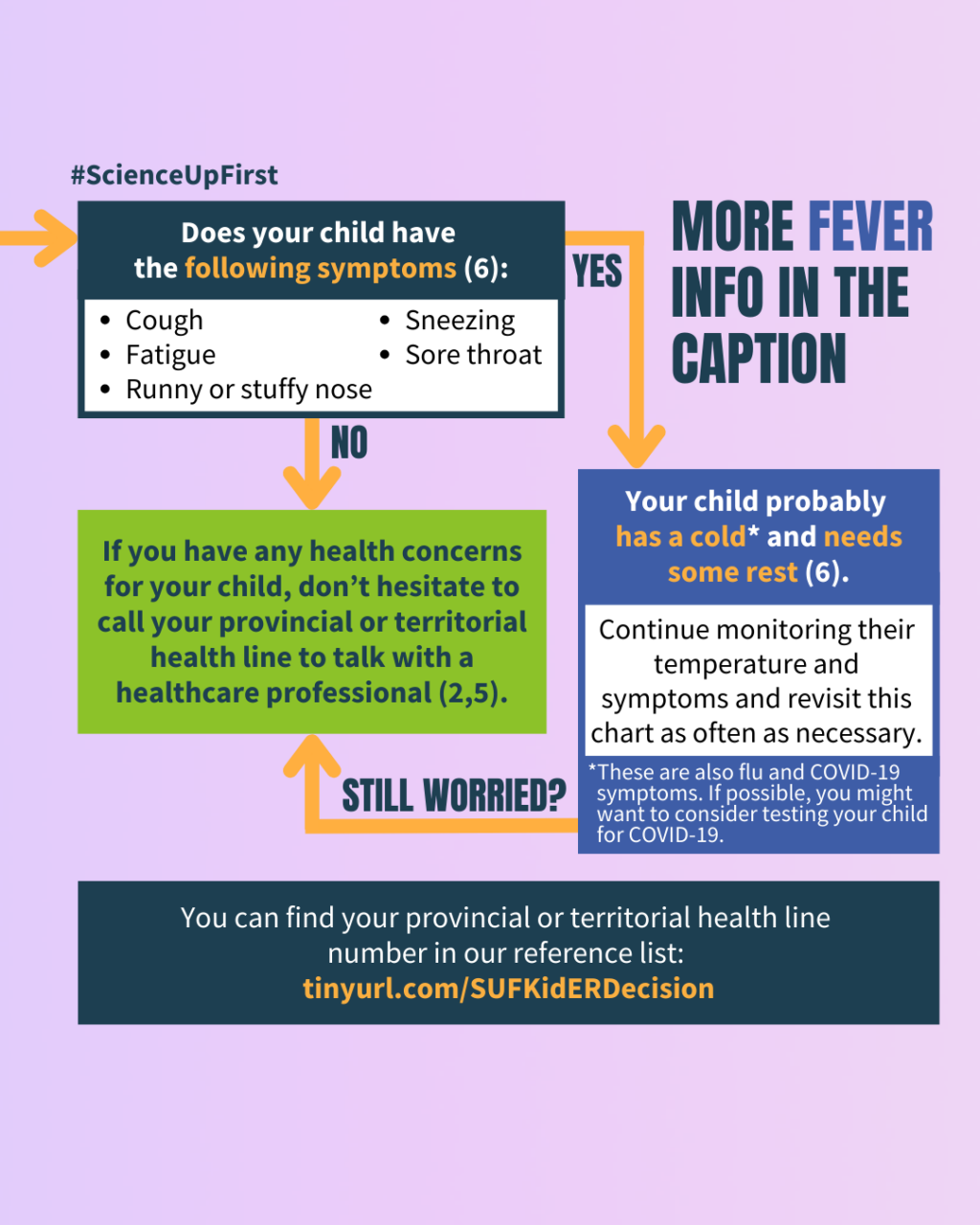
Accessible Version
- Do you know the best method to take your child’s temperature?
a) No (2)
b) Yes (3)
2. The best method depends on their age (1):
| Age | Most accurate method | Alternative method |
|---|---|---|
| Younger than 2 years old | Rectum | Armpit |
| Between 2 and 5 years old | Rectum | Ear, armpit |
| Older than 5 years old | Mouth | Ear, armpit |
- Does your child have a fever?
a) I’m not sure (4)
b) Yes (5)
c) No (7)
- A fever is any temperature above the normal range, which depends on the method used to measure it (1):
| Method | Normal range |
|---|---|
| Rectum | 36.6°C to 37.9°C
97.9°F to 100.2°F |
| Mouth | 35.5°C to 37.5°C
95.9°F to 99.5°F |
| Armpit | 36.5°C to 37.5°C
97.8°F to 99.5°F |
| Ear | 35.8°C to 37.9°C
96.4°F to 100.2°F |
Does your child have a fever?
a) Yes (5)
b) No (7)
- Is your child less than 3 months old, has a chronic illness, or has a weakened or deficient immune system?
a) Yes (6)
b) No (7)
- You should go to the emergency department immediately (2,3).
- Regardless of their age, does your child has any of the following symptoms (2,3,4):
- Low rectal temperature equal or below 36°C (96.8°F)
- Pale skin or abnormally coloured
- Show signs that suggest difficulties breathing (despite frequent nasal irrigation with saline water) such as:
- The skin below and between the ribs is pulling with every breath (this is called retracting)
- Flaring nostrils
- Difficulty feeding
- Show signs of moderate to severe dehydration*
- Is not responsive and less alert
a) Yes (8)
b) No (9)
*Signs of dehydration (4)
| Severe | Moderate | Mild |
|---|---|---|
| No urination for over 6 hours in babies and 8 hours in older children
Faster breathing No tears Dizziness, confusion and headache Cold, bluish skin that doesn’t bounce back when gently pinched Sunken fontanels (soft spots on babies’ heads) | Dry mouth
Infrequent or dark urine Less active than usual Drowsiness and irritability | Mouth is drier than usual
Thirstier than usual Less frequent urination |
- You should go to the emergency department immediately (2,3).
- Regardless of their age, does your child (2,3,4):
- Show signs of mild to moderate dehydration (see previous slide*)?
- Has a fever increasing rapidly, lasting more than 4 days or returning after subsiding for more than 24 hours?
- Has a harder time breathing than usual?
- Presents symptoms that worsen or do not improve after 7 days?
a) Yes (10)
b) No (14)
- Is your child under 2 years old?
a) Yes (11)
b) No (13)
- Has the fever persisted for more than 48 hours?
a) Yes (12)
b) No (13)
- Is the fever alleviated with medication?
a) Yes (13)
b) No (8)
- It is normal for fever to last from 48 to 72 hours. While the fever subsides keep your child at home. While feverish, your child might be more irritable than usual and cry more (2).
- Does your child have the following symptoms (6):
- Cough
- Fatigue
- Runny or stuffy nose
- Sneezing
- Sore throat
a) Yes (15)
b) No (16)
15. Your child probably has a cold and needs some rest (6). Continue monitoring their temperature and symptoms and revisit this chart as often as necessary.
a) Still worried? (16)
16. If you have any health concerns for your child, don’t hesitate to call your provincial or territorial health line to talk with a healthcare professional (2,5). You can find your provincial or territorial health line number in our reference list.
It can be overwhelming for parents and caregivers to decide whether or not to go to the ER. We’ve broken down key factors to look for to, hopefully, alleviate some of this stress.
Remember, fever is one of our body’s tools to fight infection, as it makes our body hostile to the microbes infecting us (3,7,8). If not uncomfortable, a fever does not always need to be alleviated (1,8). The fever itself is not dangerous to your child (3). How much of a fever your child has is not a measure of how sick they are or how serious the infection is. Your child’s behaviour is a much better indicator (1).
There are a few things you can do at home to help reduce your child’s discomfort is case of a fever (2,3,8,9):
- Have them drink a lot of fluids.
- Dress them with lightweight clothing.
- If your child is 6 months old or older you can give them acetaminophen or ibuprofen. Always read the label carefully for dosing.
- Nasal irrigation with saline water or nasal suction with a nasal aspirator can relieve nasal discharge and congestion.
There are also a few things you should avoid doing (1,3,8,9):
- Never give aspirin to children or teenagers.
- Avoid cold baths or removing all your childs clothes as it could make them shiver which will increase their body temperature.
Disclaimer: this decision tree does not cover all illnesses that may require a visit to the emergency (i.e. stomach flu, broken bones etc.). If you have any health concerns for your child, don’t hesitate to call your provincial or territorial health line to talk with a healthcare professional (2,5). You can find your specific health line number in our reference list.
We hope this decision tree helps alleviate some of your stress.
Don’t forget to save it for yourself and share it with all the parents in your life!
A big thank you to Dr. Shazma Mithani (@drshazmamithani) for reviewing this post. Follow her for great resources on kid and family health.
Share our original Bluesky Post!
View our original Instagram Post!



